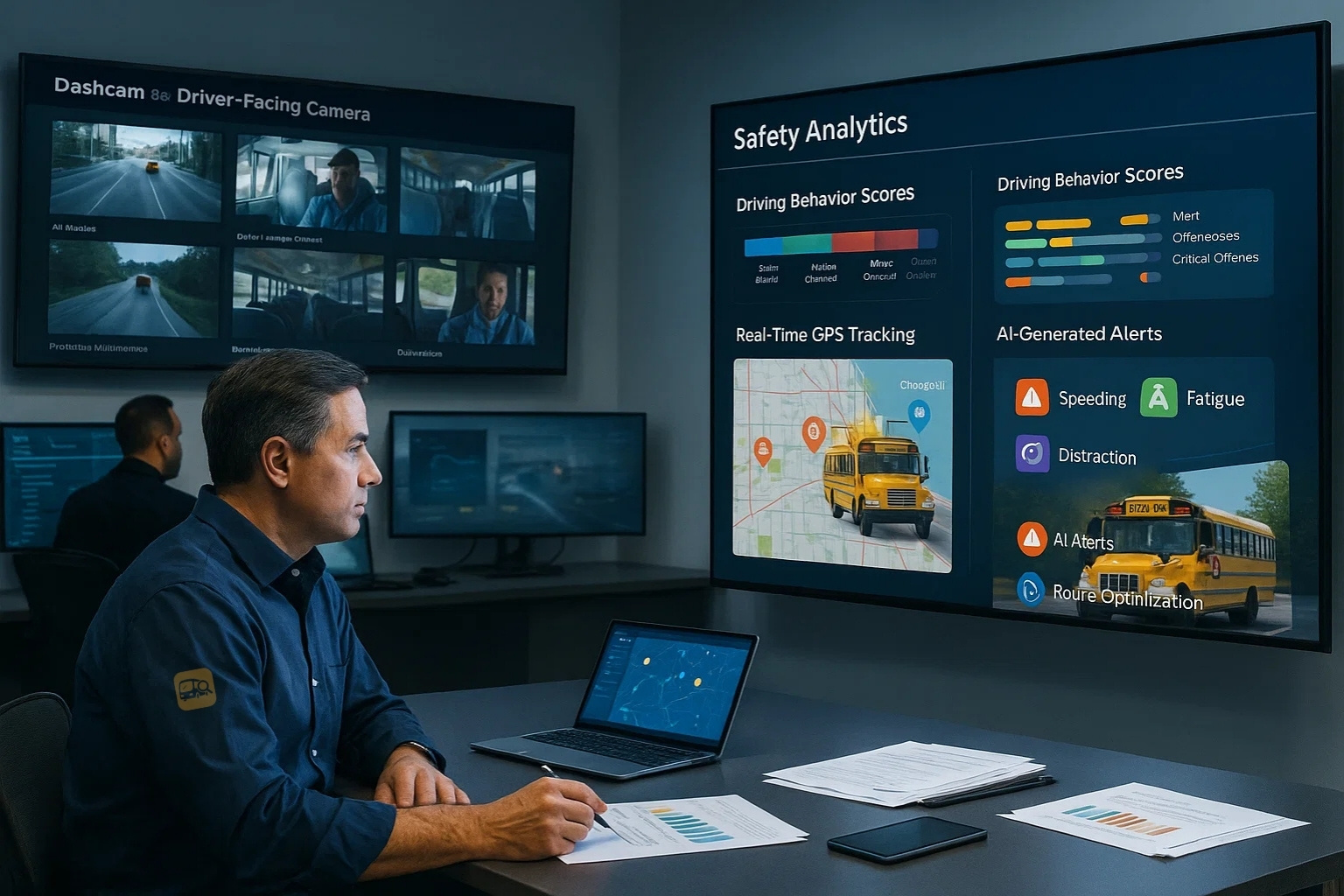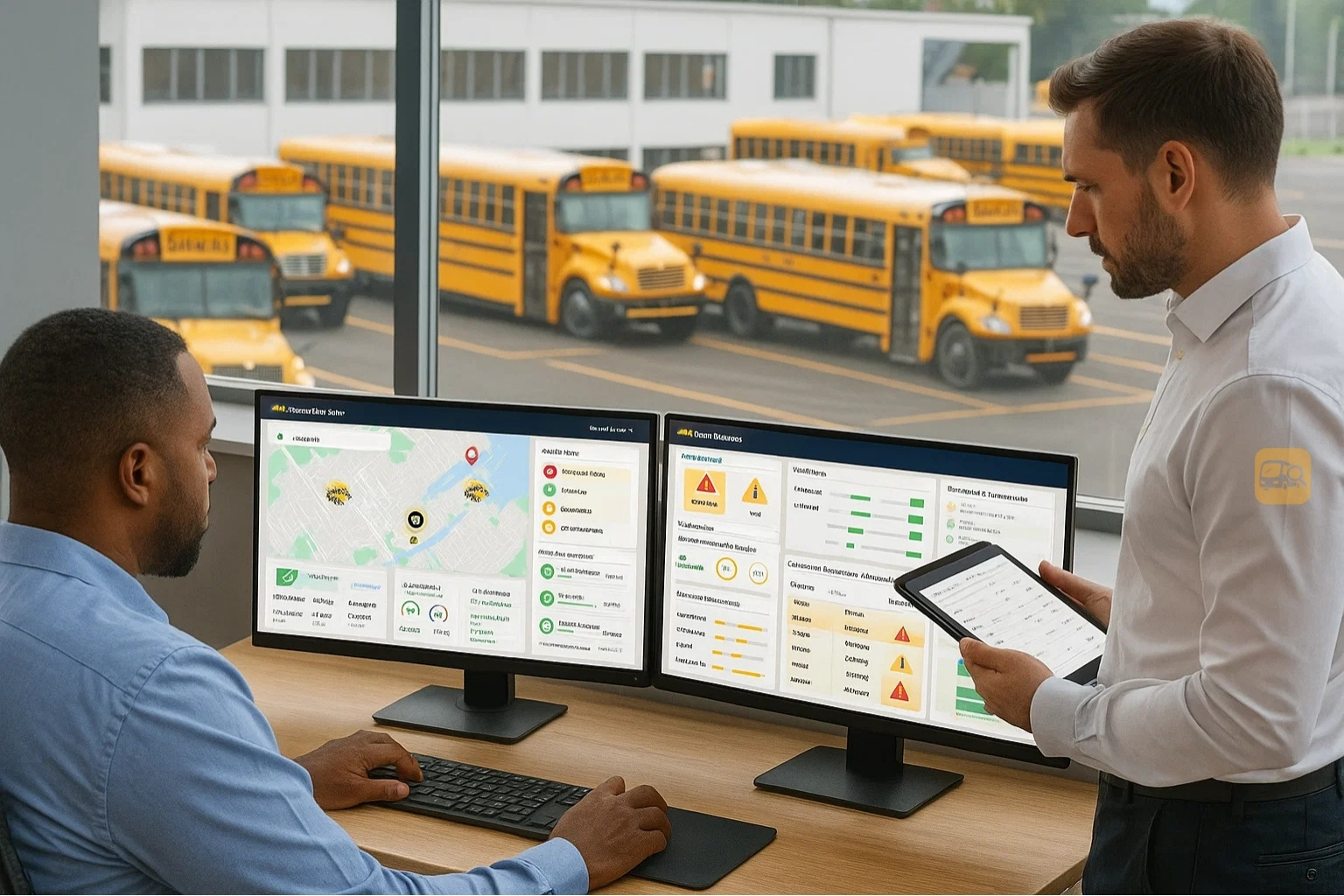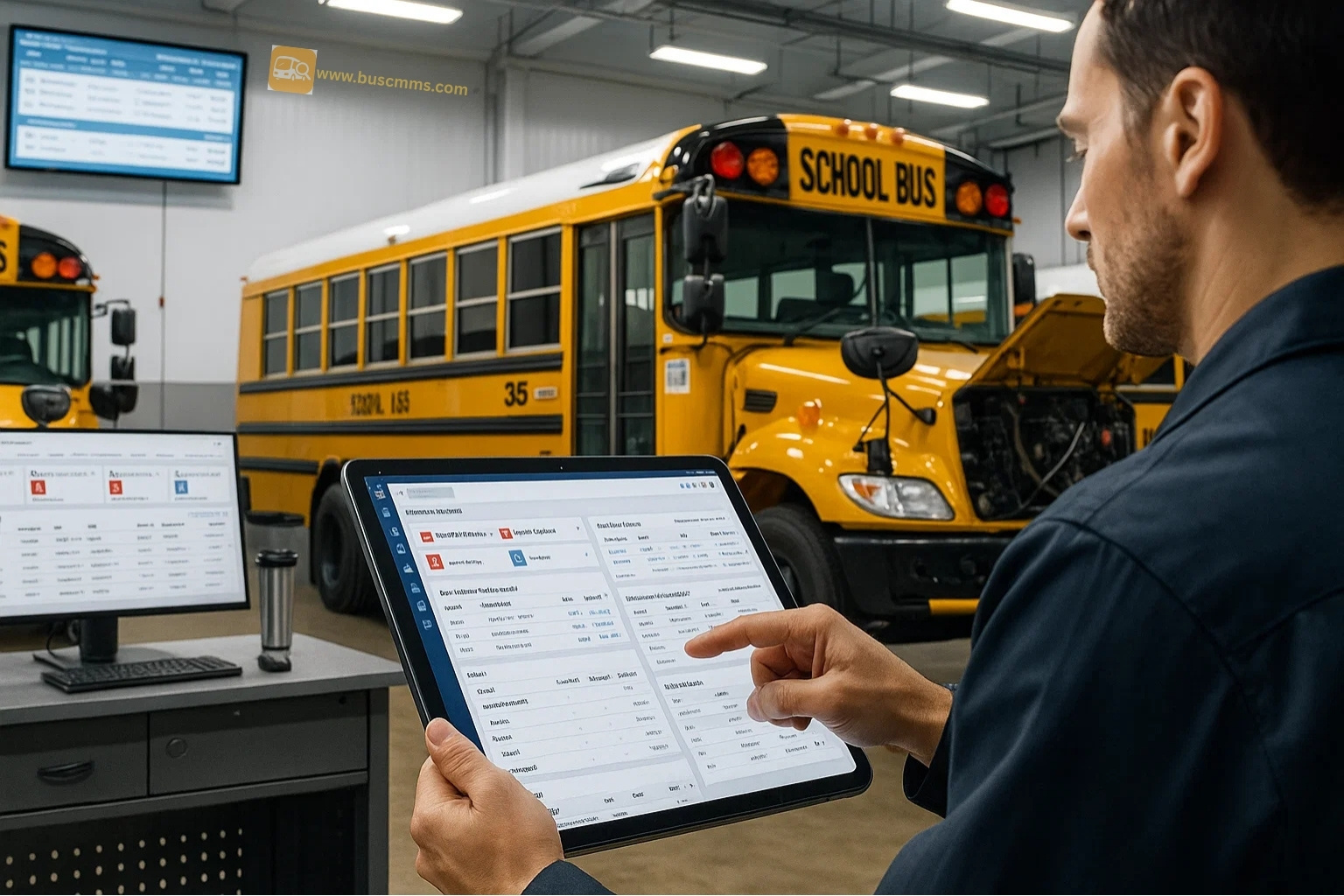In today's competitive transportation landscape, bus fleet operators face mounting pressure to reduce operational costs while maintaining reliable service. With fuel expenses accounting for up to 40% of total fleet operating costs and inventory management challenges causing unexpected downtime, smart fleet managers are turning to Computerized Maintenance Management Systems (CMMS) to drive efficiency and profitability.
A modern CMMS solution doesn't just track maintenance schedules—it transforms how you approach fleet software integration, predictive analytics, and overall fleet efficiency. Let's explore how implementing the right maintenance software can revolutionize your bus fleet operations and deliver measurable results for your bottom line.
The Hidden Costs of Poor Fuel and Inventory Management
Before diving into solutions, it's crucial to understand the true impact of inefficient operations on your fleet. Poor fuel management isn't just about higher prices at the pump—it encompasses vehicle uptime issues, route optimization failures and maintenance scheduling problems that compound over time.
Consider a typical mid-sized bus fleet operating 50 vehicles. Without proper CMMS tools and telematics integration, this fleet might experience:
- 15-20% higher fuel consumption due to poorly maintained engines and inefficient route planning
- 25% increased inventory costs from emergency parts orders and overstocking
- 30% more unplanned downtime from reactive maintenance approaches
- Compliance tracking issues leading to potential fines and service interruptions
These numbers represent thousands of dollars in unnecessary expenses annually, making the case for fleet automation and intelligent maintenance software crystal clear for US manufacturing professionals managing transportation assets.
How CMMS Revolutionizes Fuel Efficiency
Modern CMMS platforms integrate with diagnostic systems and telematics to provide real-time insights into fuel consumption patterns. This integration enables proactive maintenance scheduling based on actual vehicle performance data rather than generic time intervals.
Predictive Analytics for Optimal Performance
Advanced predictive analytics within CMMS tools analyze engine performance metrics, identifying maintenance needs before they impact fuel efficiency. By monitoring parameters like engine temperature, oil pressure, and exhaust emissions, the system can predict when components need attention, preventing the 10-15% fuel efficiency loss that comes with poorly maintained engines.
Route Optimization Integration
When your CMMS integrates with route optimization software, it creates a powerful synergy. The system considers vehicle condition, maintenance requirements, and fuel efficiency ratings when assigning routes, ensuring your most fuel-efficient buses handle the most demanding schedules while vehicles needing attention receive appropriate workload adjustments.
Fleet insights generated from this integration typically show 8-12% improvement in overall fuel efficiency within the first six months of implementation, translating to significant cost savings for fleet operators.
Smart Inventory Management Through CMMS
Traditional inventory management relies on guesswork and historical averages, leading to either costly stockouts or expensive overstock situations. CMMS-driven inventory management transforms this approach through data-driven decision making and automated replenishment systems.
Automated Parts Forecasting
By analyzing maintenance patterns across your entire fleet, CMMS software identifies which parts are needed when, eliminating the feast-or-famine cycle of emergency orders and bulk purchases. The system tracks part usage rates, seasonal variations, and vehicle-specific requirements to maintain optimal inventory levels.
Real-Time Inventory Tracking
Modern maintenance software provides real-time visibility into parts availability, location, and condition. This transparency prevents duplicate orders, reduces carrying costs, and ensures critical components are available when needed for scheduled maintenance activities.
Fleet managers using integrated CMMS solutions typically see 20-30% reduction in inventory carrying costs while simultaneously improving parts availability and reducing vehicle downtime.
Maximizing Vehicle Uptime Through Integrated Systems
Vehicle uptime is the ultimate measure of fleet efficiency success. CMMS platforms excel at maximizing uptime by shifting operations from reactive to proactive maintenance strategies, supported by comprehensive fleet automation capabilities.
Condition-Based Maintenance
Rather than following rigid maintenance schedules, CMMS tools use telematics integration and diagnostic systems to determine actual maintenance needs. This approach prevents unnecessary work while ensuring critical maintenance occurs before failures happen. The result is typically 15-25% improvement in vehicle availability.
Compliance Tracking and Reporting
Automated compliance tracking ensures vehicles meet all regulatory requirements without manual oversight. The system generates necessary reports, schedules inspections, and maintains detailed records for audits, reducing administrative burden while ensuring full compliance with transportation regulations.
Ready to Transform Your Fleet Operations?
Join thousands of fleet managers who've revolutionized their operations with advanced CMMS solutions. Experience the power of integrated fleet software designed specifically for modern transportation challenges.
Getting StartedBook a Demo
Measuring Success: Key Performance Indicators
Successful CMMS implementation requires tracking specific metrics that demonstrate return on investment. Focus on these key performance indicators to measure the impact of your fleet software investment:
- Fuel Efficiency Improvement: Track miles per gallon improvements across individual vehicles and fleet-wide averages
- Inventory Turnover Rates: Monitor how quickly parts move through your system and identify slow-moving stock
- Maintenance Cost Per Mile: Calculate total maintenance expenses divided by miles driven to identify trends
- Vehicle Availability Percentage: Measure uptime improvements and downtime reduction
- Compliance Score: Track inspection pass rates and regulatory compliance metrics
Leading fleet operators typically see 15-30% improvement in these metrics within 12 months of CMMS implementation, with continued improvements as the system learns and optimizes operations.
Implementation Best Practices for Maximum ROI
Successfully implementing CMMS requires strategic planning and stakeholder buy-in. Start with a pilot program involving 10-20% of your fleet to demonstrate value before full-scale deployment. This approach allows you to refine processes, train staff, and build confidence in the system's capabilities.
Focus on data quality during implementation. Clean, accurate data is essential for effective predictive analytics and fleet insights. Invest time in properly configuring vehicle profiles, maintenance procedures, and inventory parameters to ensure the system can deliver optimal recommendations.
Staff training is equally important. Ensure mechanics, dispatchers, and management understand how to use the system effectively. Regular training sessions and ongoing support maximize adoption rates and system effectiveness.
Don't Let Inefficiency Drain Your Profits
Every day without optimized fuel and inventory management costs your operation money. Take the first step toward streamlined operations and improved profitability.
Getting StartedBook a Demo
Conclusion
Modern bus fleet operations demand sophisticated solutions to address complex challenges of fuel efficiency and inventory management. CMMS software provides the technological foundation necessary to transform reactive operations into proactive, data-driven fleet management systems.
The combination of predictive analytics, telematics integration, and automated maintenance scheduling creates a powerful platform for reducing costs, improving vehicle uptime, and ensuring regulatory compliance. With typical ROI achieved within 12-18 months, CMMS implementation represents one of the most effective investments fleet managers can make.
The question isn't whether your operation can afford to implement CMMS—it's whether you can afford not to. In an increasingly competitive market, fleet operators using advanced maintenance software and fleet automation are gaining significant advantages over those relying on traditional management approaches.
Start your journey toward optimized fleet operations today. Your vehicles, your budget, and your customers will thank you for making the smart choice to embrace modern fleet management technology.








